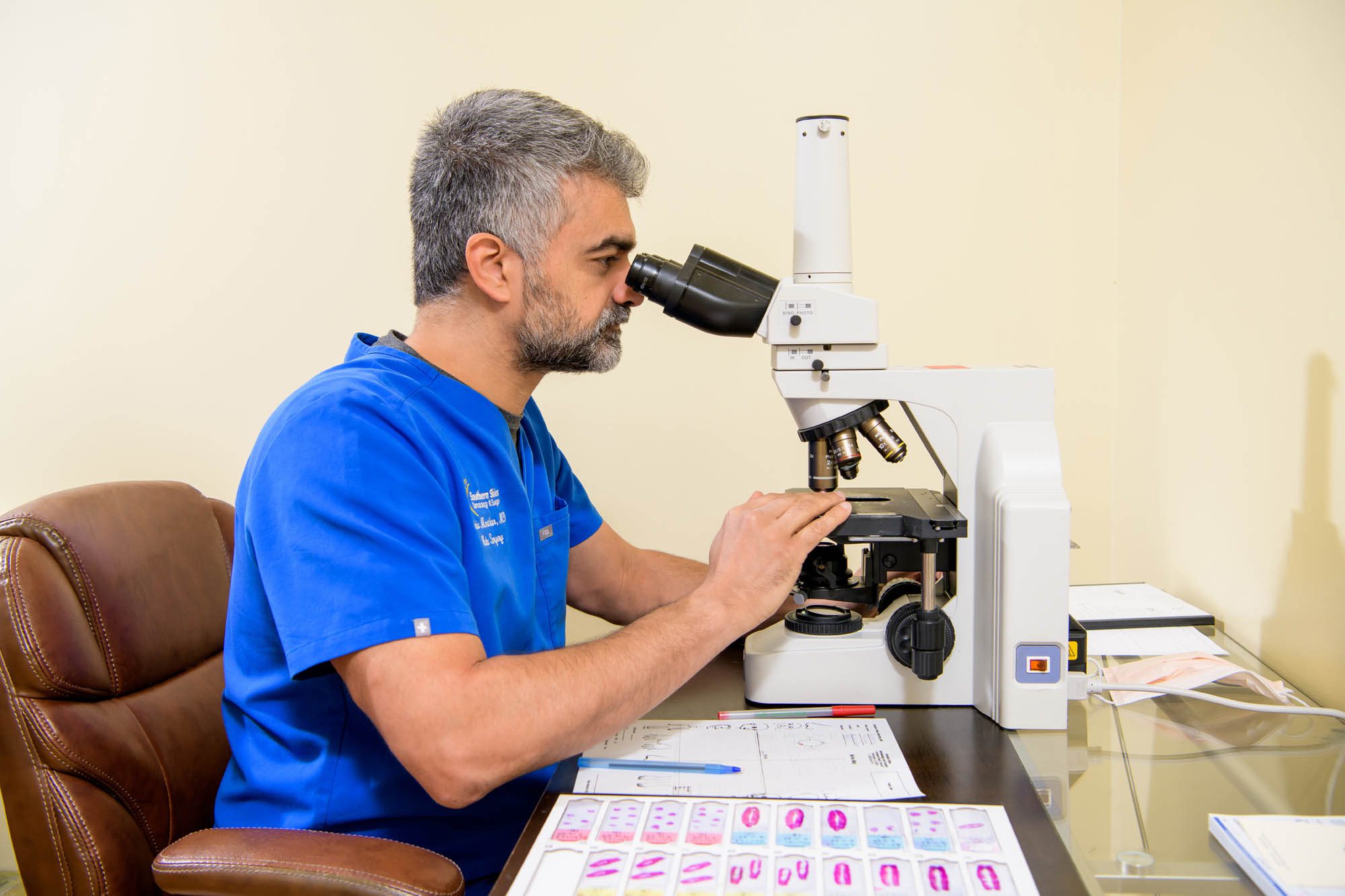Skin Exams and Biopsies
Detecting Skin Cancers With Skin Exams and Biopsies
Skin cancer comes in a few forms, and the signs are telltale to a trained eye, so it is imperative to make an appointment with your dermatologist to conduct a full-body skin exam when indicated or you have areas of concern.
If your doctor finds anything suspicious, they may recommend a biopsy, a quick procedure involving removing a piece of tissue to sample the cells. The sample (specimen) is then sent to a lab to be processed into thin layers, placed on a microscope slide, and examined by a medical pathologist.

Schedule an Annual Full-Body Skin Exam
Patients with numerous moles on their skin, outdoor jobs or hobbies that expose them to frequent, prolonged sunlight, or those with a personal or family history of skin cancer should have their skin examined annually.
This appointment will typically take around 15 minutes and no more than a half-hour – depending on whether any skin biopsies are necessary. After having you change into a medical gown, the doctor will examine your entire body, including hard-to-see areas such as your scalp, behind your ears, your back, between your toes, and, when warranted, the buttocks and genitals. We will closely examine any particular areas of concern or areas. If there are any areas that you would prefer we not examine, we respect that.
Due to our training, experience, and focus on skin cancer detection, we often diagnose a variety of skin conditions that often otherwise go unnoticed and untreated. We will ask you about your medical history and family history and may have you point out any areas of concern.
Dermatologists are trained and experienced and understand the most subtle signs of cancer and other skin conditions. Our providers use a polarized magnifying glass called a dermatoscope to examine any suspicious spots on your skin. Sometimes alcohol or oil is used better to see the texture of spots on your skin, and the doctor may even take a digital photo of the area for further examination.
Skin Biopsies
If your doctor notices any suspicious growths or moles, they may order a biopsy of the spot. A skin biopsy procedure involves removing a small piece of skin for examination under a microscope by a pathologist.
A skin biopsy is necessary to diagnose skin cancers and is required by insurance companies before your dermatologist can perform any skin cancer treatments.
There are three types of skin biopsies:
-
 A punch biopsy uses a specialized circular tool to remove a small plug of skin.
A punch biopsy uses a specialized circular tool to remove a small plug of skin.
-
 A shave biopsy involves using a razor to thinly remove a sample.
A shave biopsy involves using a razor to thinly remove a sample.
-
 An excisional biopsy requires a scalpel to remove the entire spot to examine the whole spot under the microscope.
An excisional biopsy requires a scalpel to remove the entire spot to examine the whole spot under the microscope.
The type of biopsy you require will is determined by your doctor and depends on the size, shape, and location of the lesion being examined.
This is a quick and minimally invasive procedure, so you’ll be able to return to your day afterward. Your medical team may administer localized anesthesia and give you stitches if necessary. You should care for the area by keeping it clean and moisturized and following any after-care instructions given to you by your doctor.
Your doctor will call you to discuss your results in 2-7 days.

Make Your Appointment Today
Your skin’s health is vital. Our team of world-class doctors and surgeons are here for you, whether you need a full-body examination, biopsy, or skin cancer treatment, in a clean and caring environment. Call us today and schedule an appointment! We’re looking forward to seeing you.

